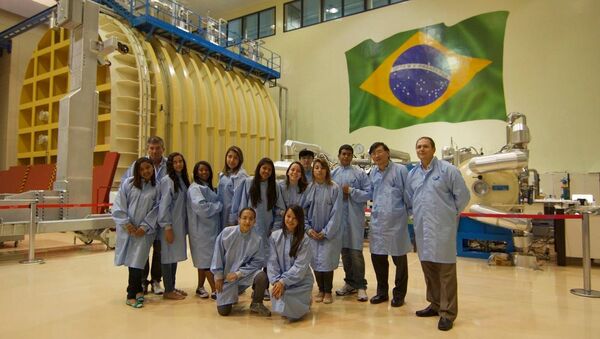The Tancredo-1 satellite, developed by the students of Tancredo de Almeida Neves Municipal School in the city of Ubatuba, measures only 13 centimeters in diameter and weighs about 700 grams.
Launched into orbit about 400 kilometers above the Earth, the satellite will help study how plasma forms in the atmosphere.
Cândido Moura, the teacher in charge of the project, told Sputnik Brazil that he came up with this idea in 2010 after reading an article in a science magazine about a US company offering to launch satellites in space.
He and his students managed to build the satellite by 2013, but the company they contracted said it wasn’t ready to carry out the launch, prompting Moura to seek help at the Brazilian Space Agency, which was impressed by their ambitions.
"We had to remake the entire satellite because the ISS, which agreed to carry out the launch, has much more strict safety regulations than most carrier rockets. The process was done in several stages. First a carrier rocket was launched to the ISS; the whole flight took 5 minutes. Then it spent 3 days docking with the ISS, and only after that the satellite was launched in space. Tancredo-1 will remain in orbit for 4 months," Moura said.
According to Moura, the students have essentially proven that they can accomplish amazing things if given a chance, along with proper guidance and training of course, as all of the people involved in the project were tutored at the National Space Research Institute.
"We want everything to be real; to do things instead of listening to someone merely explaining them. This is the direction a school should move in: it should prepare students for life," the teacher declared.


